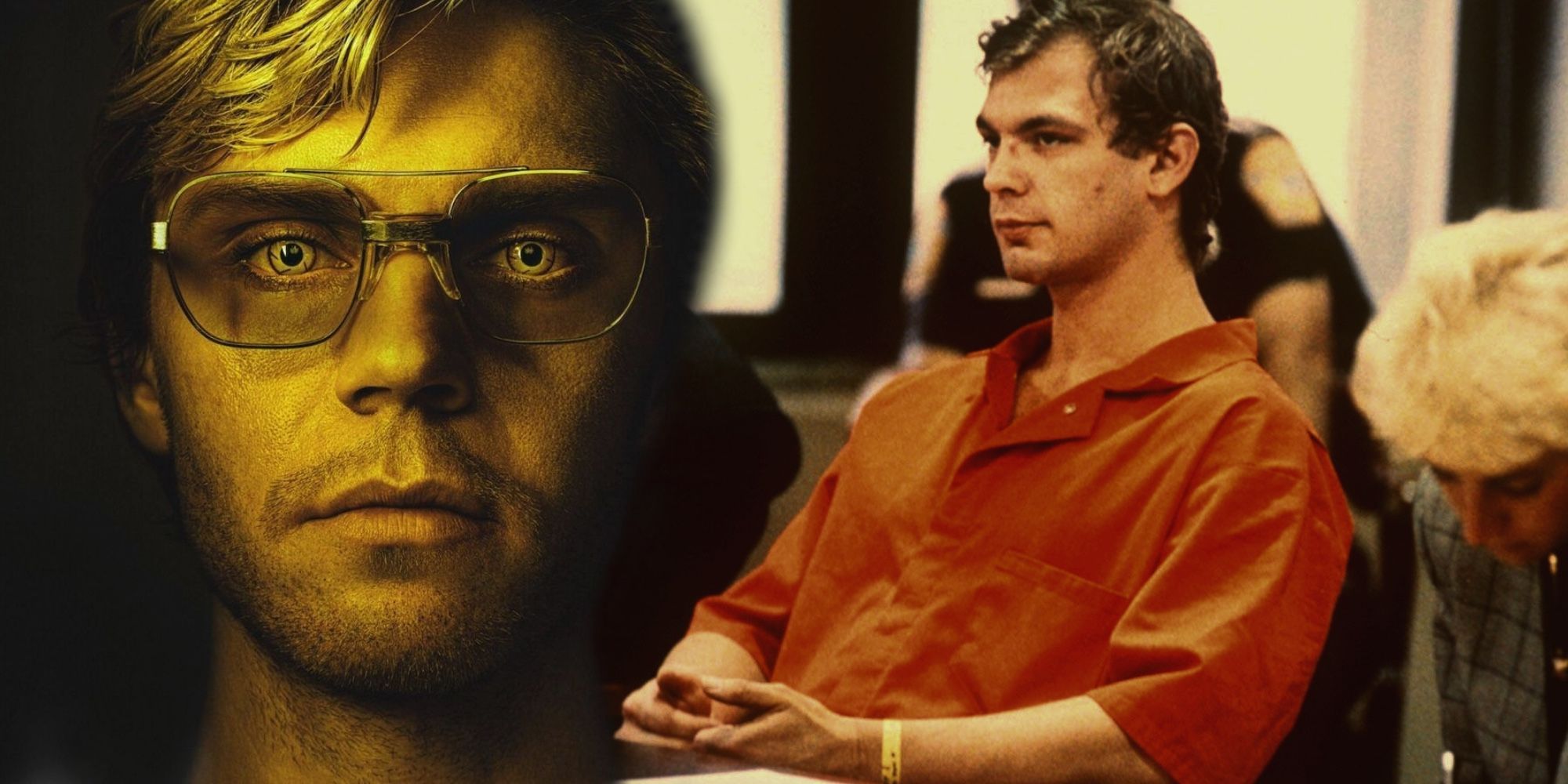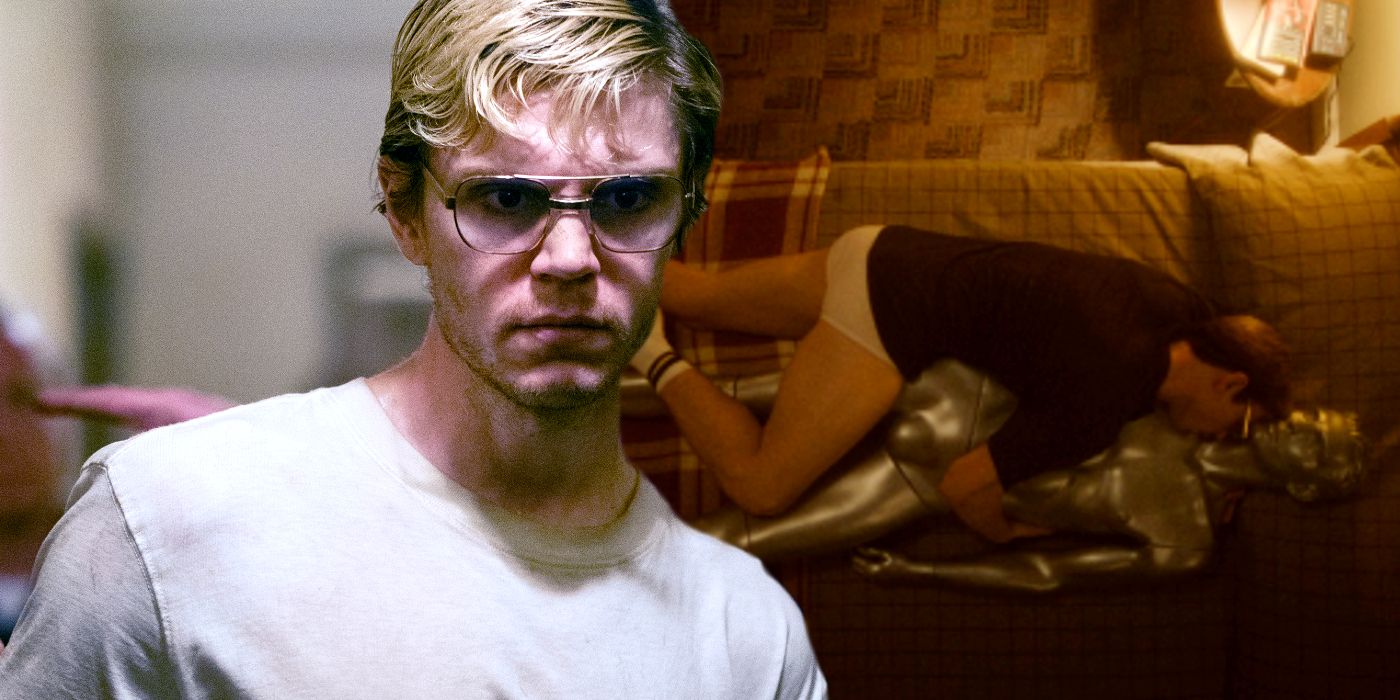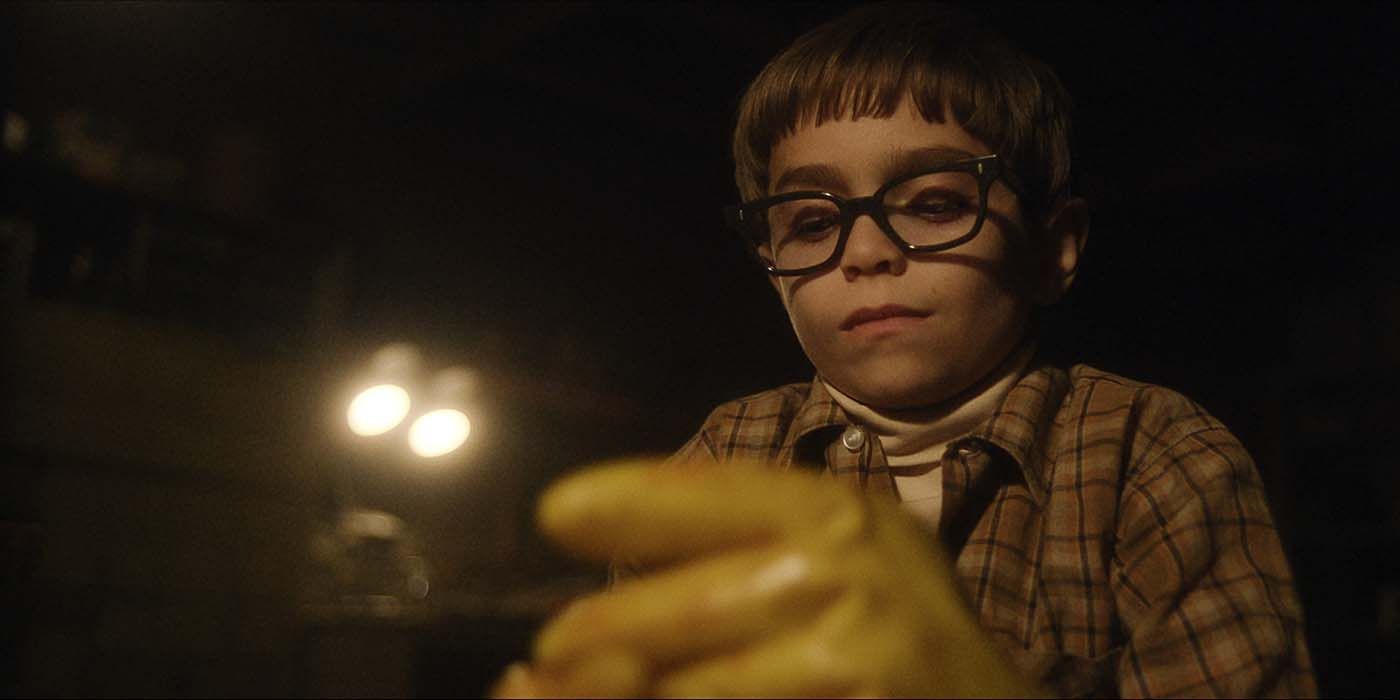Netflix's Conversations with a Killer: The Jeffrey Dahmer Tapes covers many details that the TV series Dahmer—Monster: The Jeffrey Dahmer Story misses in the serial killer's story. As the third installment of Netflix's Conversations with a Killer collection, The Jeffrey Dahmer Tapes follows the release of The Ted Bundy Tapes in 2019 and The John Wayne Gacy Tapes in 2022. In three episodes, the documentary covers Dahmer's childhood, murder investigations, trial, and eventual death in prison.
Dahmer—Monster: The Jeffrey Dahmer Story is just as much a show about Dahmer's victims as it is about Dahmer himself, taking the time and care to contextualize the victims’ stories before Dahmer cut their lives short. In doing so, the dramatized account of Jeffrey Dahmer's life skips over a lot of Dahmer’s personal confessions and the deep-dive into Dahmer's psyche over the duration of his trial. Another reason the writers decided to exclude Dahmer’s perspective is to avoid sympathizing with the serial killer. Netflix's new documentary series released on October 7, 2022 includes big revelations that give audiences of Dahmer—Monster more insight into who Dahmer was, and why he did what he did.
Dahmer's Dance With The Devil
The Jeffrey Dahmer Tapes reveals that after Dahmer's first two murders, spaced nine years apart in the full timeline of his murders, Dahmer believed that he was born innately evil and destined to carry out the work of the devil. He began watching movies that depicted evil forces obsessively and reciting incantations as part of his religious exploration. He became an avid fan of Star Wars: Return of the Jedi, particularly of Emperor Palpatine, who embodied evil with the power of mind control. However, the imagery in the movies were not enough for him; he had to live out his devilish fantasies. He acquired yellow contact lenses that mimicked Palpatine's eerie eyes, and he routinely emulated his idea of the devil to excite himself before he went out on the hunt for his victims.
Dahmer's obsession with the devil went beyond curiosity and into impersonation and worship. He eventually incorporated this compulsive obsession of his into the killing of his victims. Dahmer's final victim, Tracy Edwards, survived his encounter with Dahmer, and his testimonies helped the police finally put a stop to the murders. According to Edwards, Dahmer handcuffed him after inviting him back to his apartment under the ruse of paying him to model for Dahmer's photography. With a knife to Edwards's chest, Dahmer then forced Edwards to watch The Exorcist III with him. Dahmer became preoccupied with the movie and paid little attention to Edwards, rocking back and forth in a sitting position and making incoherent noises, "talking like in tongues."
Fortunately, Edwards was able to escape Dahmer's apartment and led the police to Dahmer's arrest. When the police searched his apartment, on top of the polaroids that Dahmer took of his victims, they found a shrine that Dahmer had built with his victims' remains. A line of skulls and incense lay on a black table, with two full sets of skeleton standing on the left and right side of the table, and a blue globe light shining over the table to complete the shrine. The Jeffrey Dahmer Tapes episode 3, "Evil or Insane?" shows Dr. Carl Wahlstrom testifying that Dahmer believed he was creating a "power center in which he would be able to get special powers" with the sacrificial shrine composed of skulls and bones. Although none of Dahmer's other victims lived to tell their stories, it is not hard to imagine what other ritualistic performances Dahmer forced them to participate in before adding their remains to the shrine.
Jeffrey Dahmer grew up in a religious household, and Dahmer's paternal grandmother Catherine strongly encouraged him to attend church with her every Sunday. Although it is uncertain whether his grandmother knew of Dahmer's sexual preference, Catherine Dahmer openly condemned homosexuality according to her religious beliefs. It is plausible that the religious scrutiny Dahmer experienced growing up, as well as the intense shame he internalized for being homosexual, played a role in his obsession with the devil. After his conviction and imprisonment, however, Dahmer returned to his childhood faith and began seeking spiritual guidance from a Christian minister. Encouraged by his father and his minister, he was baptized and devoted himself to Christianity until his death.
What Really Happened To The Mannequin
In Dahmer—Monster, Jeffrey Dahmer stole a mannequin as a substitute for the men he desired sexually, dressing it up and laying with it in bed to live out his fantasies. When he left for work one day, his grandmother found the mannequin in his bed and disposed of it, and when Dahmer came home finding his bed empty, he screamed at his grandmother in a fit of rage for throwing the mannequin away without his permission. In reality, that is not exactly what happened. According to Dahmer himself in Conversations with a Killer: The Jeffrey Dahmer Tapes, his grandmother did find the mannequin when doing Dahmer's laundry, but she did not take the liberty to throw it away herself. Since Dahmer’s mother, Joyce, had stepped out of his life at that point, Catherine Dahmer was left to take care of Jeffrey herself. She confronted Dahmer about it, asked him what it was and where he got it from, then she called his father Lionel to tell him about it. Dahmer states he then took the mannequin into his grandmother's basement, destroyed it, and discarded the pieces before his father could see them. Dahmer would then go on to dismember and discard four of his 17 victims in the same basement.
Dahmer's Secret Childhood Friend
Much of Dahmer's childhood is depicted to be lonely and neglected in the Dahmer—Monster series, with Dahmer's mother Joyce favoring his younger brother David, and Jeffrey Dahmer's father Lionel frequently absent because of the fights that would break out between him and Joyce. Young Jeffrey Dahmer was also shown to have no friends to keep him company, and as a result he would spend hours alone studying animal carcasses. What the show left out is that Dahmer had a childhood friend who actively participated in his early fascinations with anatomy and taxidermy. Eric Tyson, who appears in The Jeffrey Dahmer Tapes, recalls their shared childhood together. Tyson and Dahmer would often go hiking in the woods and look for bones and carcasses of animals together, which Dahmer would then clean the flesh off of and display together in an organized manner on a table in the shed in his backyard. Tyson did not share the same affinity for anatomy and taxidermy that Dahmer had, and they eventually grew apart.
Who Was Tony Actually?
The deaf and mute character of Tony Hughes was one of the victims that the TV series Dahmer—Monster spent the most time and focus on. Tony is deaf and mute, but he aspires to be a model, which is why he agrees to pose for Dahmer in his apartment. They then develop a sexual relationship, but when Tony leaves Dahmer's apartment after a night spent together, Dahmer believes Tony is abandoning him, never to be seen again. Tony happens to forget his keys at Dahmer's apartment and returns for them, and Dahmer promptly knocks him unconscious to make him stay.
The writers of Dahmer—Monster took some liberty in dramatizing many of the characters involved in Jeffrey Dahmer’s story—Tony’s included. In fact, the show incorporated aspects of an earlier Dahmer victim into Tony's charater in Dahmer—Monster. Tony's full name in the show is Anthony "Tony" Hughes, based on Dahmer's real-life victim Anthony Hughes. Another Dahmer victim, Anthony Lee Sears, was murdered two years before Anthony Hughes, and it was Anthony Sears who was a professional model, not Anthony Hughes.
Tony's character in Dahmer—Monster bears the name and likeness of the real-life Anthony Hughes, but the details of his death were altered in the show. Anthony Hughes and Jeffrey Dahmer did have a sexual relationship for a period of time, as a friend of Hughes's testifies to in The Jeffrey Dahmer Tapes, but Hughes did not forget his keys and return to the apartment, giving Dahmer the opportunity to knock him out by the head. Like many other instances in Dahmer—Monster, the writers miss crucial information regarding Hughes’s death. Hughes was actually the first subject of Dahmer's “zombie” experiments using a crude lobotomy procedure, performed with the intent to keep his victims alive but compliant. Dahmer drugged Hughes (as was his routine practice) to render him unconscious, then he drilled a hole in Hughes's skill and injected muriatic acid into his brain, which then killed him.
So Was Dahmer Sane Or Insane?
The third and last episode of The Jeffrey Dahmer Tapes documentary series covers the end of the trial and the very public debate of whether Jeffrey Dahmer was (or should have been judged as) sane or insane. In the true crime drama, Dahmer is judged legally sane by the jury, and American Horror Story alum Evan Peters delivers an uncannily realistic speech to the courtroom nearly identical in tone and speed to Jeffrey Dahmer's real-life address. However, the psychiatrists studying him for the duration of the trial still have not, to this day, come to an agreement on the state of his sanity. There is consensus, on the other hand, that Dahmer had the mental illnesses of necrophilia and alcoholism.
The audience may be surprised by how articulate and self-aware Dahmer sounds in the tapes of his confessions. He often reflects upon his psychological development, and he proposes theories to how and why he developed the urge to kill. In comparison to the egotistical and evasive tone that John Wayne Gacy speaks with in The John Wayne Gacy Tapes, Dahmer is forthcoming, non-defensive, and remorseful. Since fellow inmate Christopher Scarver killed Dahmer in prison before further extensive interviews and studies could be carried out with him, and his brain has been cremated since then, the only materials left to analyze Dahmer's psychological state with are the recordings included in Conversations with a Killer: The Jeffrey Dahmer Tapes, with which the audience may draw their own conclusions.






.jpg)